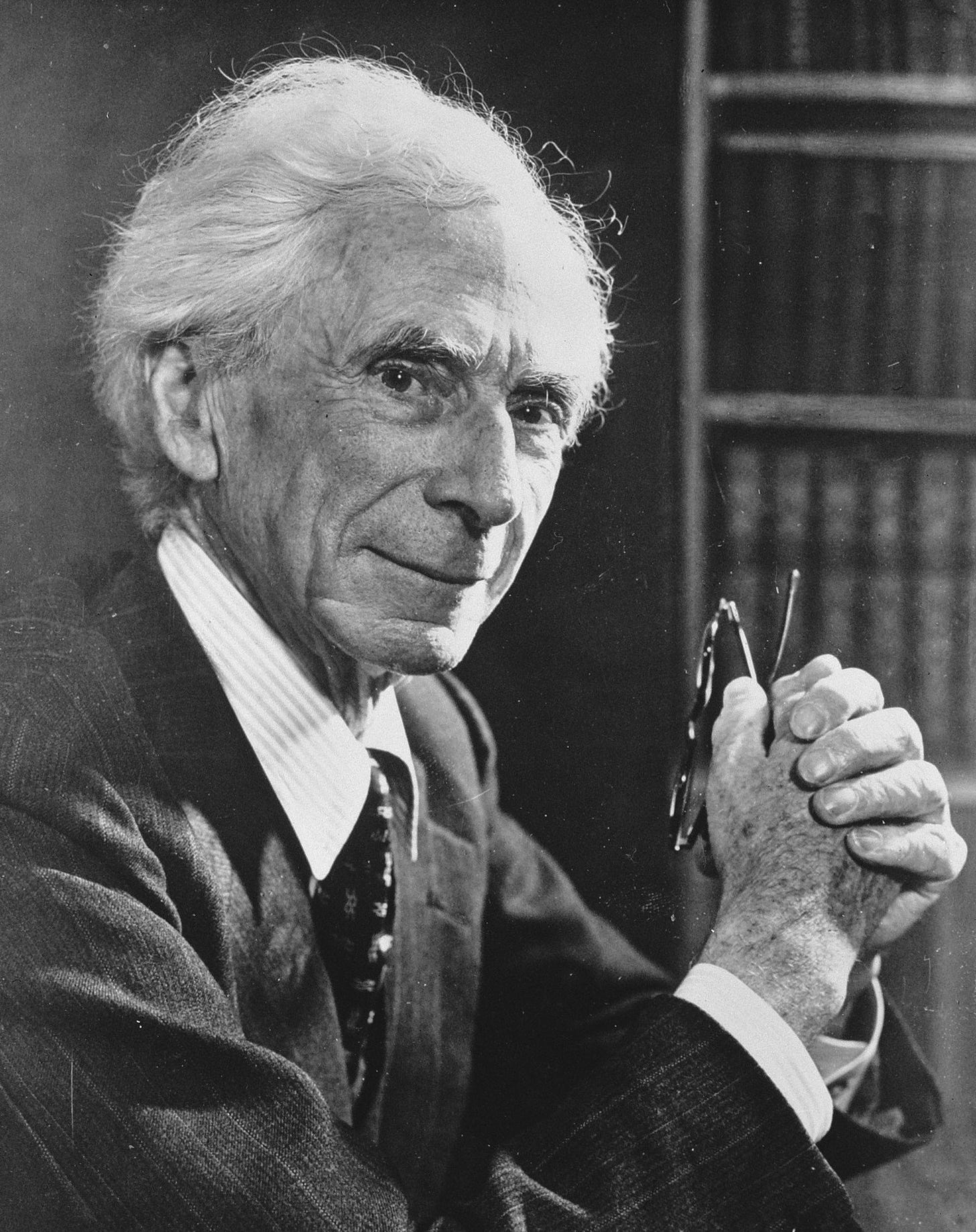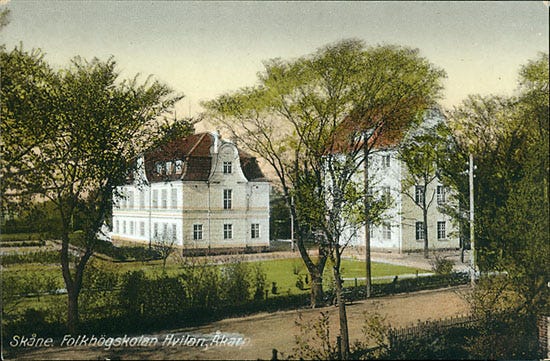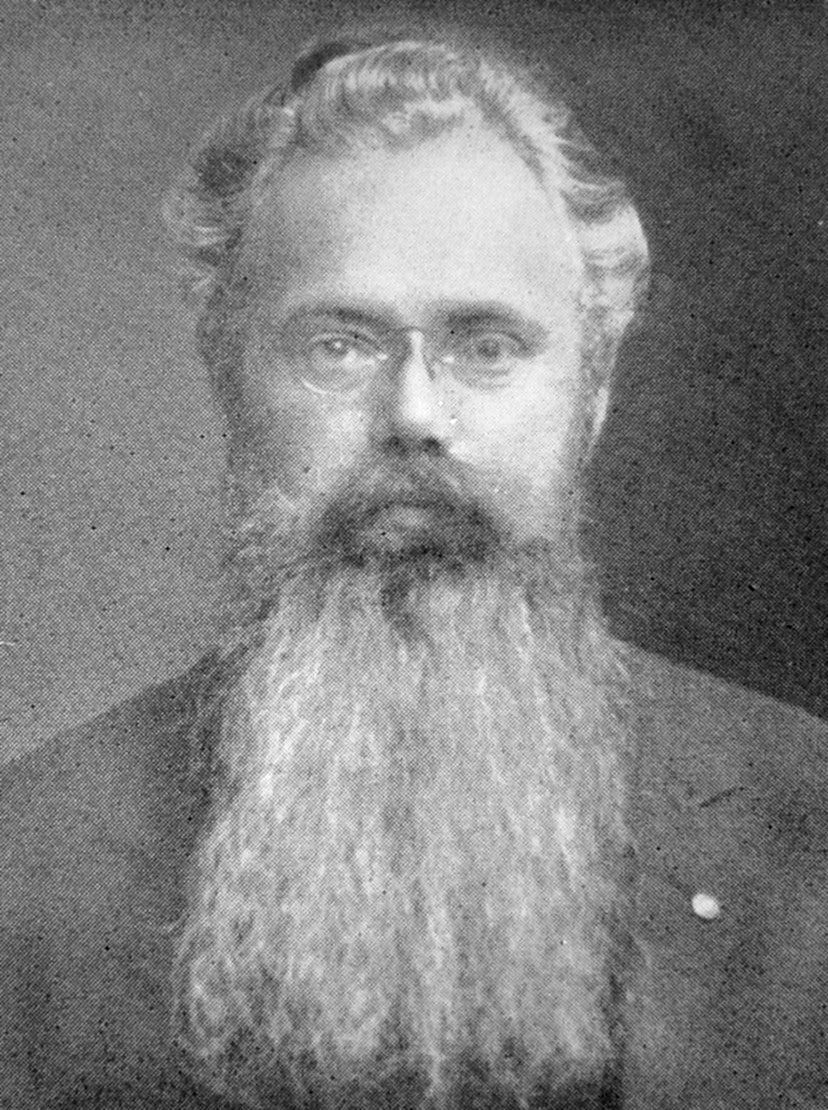Growing up on the Swedish seaside, I had a five-minute walk to four open learning facilities – not counting the library and the youth center. It was very Christopher Alexander.
One of the premises was an abandoned church that my friends and I used as a recording studio; we’d renovated it ourselves with funding from a study association. There we played distorted pop. In another, I learned French from an émigré of Montpellier. We arranged public lectures – once, to our great surprise, we even managed to book then general secretary of the United Nations Ban-Ki Moon for a lecture in Uppsala. I analyzed Soviet cinema with a group of whom an unsettling number sang Sång för Stalin before the screenings.
Since leaving Sweden, I have realized that not everyone grows up like this. And I miss it. In fact, if the whole of Sweden was about to burn down and I could only save one thing, I might grab just folkbildningsrörelsen.
Folkbildningsrörelsen: that is the name we have for this movement of self-organized study groups, resource centers, maker spaces, public lectures, and free retreats for personal development.
These types of things exist in other countries too – but not at the same scale. Or even close.
To get a sense of how comprehensive folkbildningsrörelsen is, it helps to remember that Sweden has a population roughly comparable to New York City. If NYC had as many free resource centers per inhabitant as the municipality where I grew up, Manhattan would look like this:

At every other intersection, there would be a few rooms where you could go in and get some money to buy literature or access tools you needed. (In practice, the resource centers in cities tend to be lumped together in larger units, but the map still captures a lived reality for the 7.5 percent of Sweden’s population who regularly take part in study associations.)
Experientially, the spaces I have been part of have felt more like niche internet forums than schools. There were plenty of trolls, witches, and freaks – but we were also able to sustain a depth of conversation which was out of scope at school. When I entered university, seminars often felt like play-acting in comparison. In our often quite dilapidated buildings (as in internet communities), we hadn’t thought about what we were doing as learning.
We were just obsessing about things.
How did this all come about?
In the 19th century, when these houses and the financing that enables them began to be built out, the main impetus came from the German Bildung tradition.
Bildung etymologically refers to shaping yourself in the image (das Bild) of God. God in this context should be imagined as a highly self-possessed spectral being – in control of its emotions, with mind and heart in harmony, and willing to take individual moral responsibility. Think Bertrand Russell but less atheist, and sitting on a cloud.

In its original formulation, Bildung had a somewhat bourgeois flavor. It smelled of tweed and leather elbow patches. But in the early 1800s, thinkers such as Johann Heinrich Pestalozzi, N.F.S. Grundtvig, and Johann Friedrich Herbart figured out how to sell Bildung to farmers and day laborers – a folk Bildung, or folkbildning in Swedish. This was the tradition that took root in Sweden: the popular movement to shape yourself in the image of Bertrand Russell.
The English language version of folkbildning’s Wikipedia page refers to it as popular education. This translation is not entirely correct. The term “popular education” has a strong political connotation – the Wikipedia page talks about “class, political struggle, and social transformation” – which does not map entirely to the present Scandinavian reality. Though the study associations grew out of popular movements (the free church movement, followed by the temperance movement and the labor movement) – these spanned the political spectrum. And the learning infrastructure they spawned, as we will see, rapidly outgrew their political aims.
Building intellectual retreats for farmers
Since the 17th century, there have been popular educational movements in Sweden. Perhaps most interesting among these were the so-called Readers, who arranged reading lessons for peasants and opened secret libraries. The state, which had its own compulsory reading education, persecuted the Readers, fearful of the social unrest that might result from free reading.
In the 19th century, the popular education movement started to grow into a significant societal force. This began with the creation of so-called folk high schools (folkhögskolor). These first emerged in Denmark, in Ryslinge, where Christen Kold in 1851 started a school based on N.F.S. Grundtvig’s idea of an ungraded, discussion-focused institution for higher education, aimed at the lower classes.
Folk high schools were located in scenic areas—not so much to be romantic retreats for city dwellers but to be close to the farmers who were their main clientele. In The Nordic Secret, Björkman and Andersen argue that folk high schools were retreats for ego development along lines similar to Robert Kegan’s. It was about creating the conditions for people who had lived in simple small-scale communities to develop the knowledge and psychological complexity required to navigate modern society. Much emphasis was placed on discussions, practical skills and simulations.
The first Swedish folk high schools, Hvilan, Önnestads, and Herrestad, started seventeen years later, in 1868, seemingly without contact with the Danish movement.
They arranged role-playing events where workers and farmers played out committee meetings and other arcane parts of the political process. This meant that once they got the vote and started sweeping into office, the worker representatives out-maneuvered the representatives from the upper classes, to the great surprise of many who had argued against democracy on the grounds that it would lead to a flood of unwashed plebeians. The secretaries in the government office, who were in the habit of grading political representatives for their professionalism, left good marks for the early workers’ representatives.
At their peak, 10 percent of young adults in rural areas choose to attend folk high schools. Björkman and Andersen’s thesis is that this created a critical mass, well distributed in the population, that had the intellectual and emotional tools needed to effectively navigate a complex society. This, in turn, would explain the rapid transition that the Nordic countries made, from being the poorest in Europe in the 1850s to being the happiest, most equal, and nearly richest societies in the world eighty years later. I think that is overplaying the importance of the folk high school – but it does gesture at the transformative impact that popular education had on large swaths of the population.
And it was only just beginning.
How folkbildning went viral
Folk high schools were an important part of transforming public education into a societal force. Folkbildning was spreading.
Then, in 1902, Oscar Olsson, a secondary-school teacher who looked like he was living through the final stages of a pandemic lockdown, figured out how to make it go viral.
Olsson had returned from a trip to the United States where he had observed the success of the Chautauqua movement, an educational spectacle with speakers, showmen, and preachers, which Theodore Roosevelt, quite aptly, called “the most American thing in America”. Now Olsson was trying to figure out how to bring these ideas to his Good Templar lodge in Lund, to help his fellow Good Templars spread temperance.
What he came up with was a Scandinavian, minimalist version of Chautauqua, which he called a study circle. The study circle, Olsson envisaged, would be made up of equals and elect a leader from among its members. It would take literature as its starting point, and help its members acquire knowledge in the course of free conversation. It was, as all good memes are, a very simple idea. And it was cheap. The members (numbering between 5 and 20) could, if necessary, meet at home and would choose their own study material. That created an economically viable form of education for the working class.
And it was made even more viable three years later, when the Riksdag, Sweden’s parliament, voted to give grants for the purchase of books, on the condition that the books were made available to the general public.
Another factor behind the success of study circles was their focus on communal self-improvement. Study circles were a child of the temperance movement – a movement that neither sought collective power, like the unions, nor self-improvement for the individual, but rather encouraged people to improve to serve their fellow human beings. This focus on communal self-improvement seems to have provided momentum to the movement. It also helped foster social capital formation, creating dense high-trust networks.
The spread of study circles
The study circle model spread rapidly from the Good Templar Order through the popular movements, filling up a public depot of books – which became the foundation of Sweden’s public library system.
Since the members were working-class or small farmers, the study circles, like the Folk high schools, played an important role in preparing them for their growing political power in the 20th century. Farmhands, miners, and dock workers were studying not only political and social issues but accounting, law, literature, math – everything they would need on the day of reckoning when they would run the country. They worked weekends building houses to study in. They formed national study associations to facilitate the supply of funding. They were dead serious about becoming small Bertrand Russells.
It was not an education system. Rather, it was an attempt to unleash what I have called the learning system. Instead of interventions aimed at controlling what people learn – which is how we can think about traditional education – folkbildningsrörelsen provided people with the resources they needed to learn on their own. The movements created the conditions for an ecosystem to emerge.
In 1950, 30,000 study circles were active. One for every 200th person. Several of the architects of the modern Swedish state – such as Gunnar Sträng and Torsten Nilsson – had been raised in this ecosystem of popular education.
Twenty years later, in 1970, the number of study circles had grown to 300,000 – counting 10 percent of the population as active members.
Since then it has fluctuated around the same absolute numbers, today counting 7.5 percent of the population as active members.
By the time the movement reached its peak, the original political aspirations had somewhat waned. The waning was partially a result of the funding: to receive state funding, the associations had to give up political control of the curriculum. Both the state and the associations battled to control the curriculum, but none turned out to be strong enough to force the other, so in a sort of Westphalian peace, the control was ceded to the learners.
And, as with anything that gets decentralized, variance and variety increased.
Retired women started forming study circles to throw pottery together. There were study circles for people who were anxious about the H day, in 1967, when Sweden would switch from driving on the left side of the road to the right. White-collar workers, envious of blue-collar associations, started their own – though they favored classroom studies over discussion groups, and mostly studied accounting and how to actually run an association. Universities formed spin-offs in the form of associations to broadcast public lectures and attract students to language schools. Many study circles also, on closer inspection, turned out to be bands that wanted access to cheap rehearsal spaces.
How study circles works in practice
To start a study circle today you:
join a study association,
get instructions on how to report your studies,
submit forms to document how many participants have attended and how many hours have been spent on the studies, and
receive financial support in proportion to your efforts—about $2 per man hour—which is often invested in renting rooms but can also be spent on educational materials, tools, or services.
Until I moved from Sweden, I administered three study circles. The paperwork took about 30 minutes a year. In two cases, the study circles were book clubs. Incorporating as study circles gave us access to meeting rooms. And sometimes, when we invited researchers to discuss their ideas with them, we could use study funds to pay for their train tickets. When we wanted to learn something more practical, we used the funds to buy services—such as a recording engineer, who could sit with us when we recorded music and give us hands-on guidance.
There is, of course, financial waste in the system, and one can debate the morality of funding book clubs with taxpayers’ money. But on the whole, the 40 or so study circles I have observed got more learning per penny than the compulsory schools I have worked at.
I also can’t imagine living in a city without access to basement rooms where you can go down and find people all day engaged in strange discussions and projects. When I find myself in cities where the only places to sit down and talk are cafés and bars, I get intense claustrophobia.
Is popular education a viable alternative to public schooling?
A good educational system should have three purposes: it should provide all who want to learn with access to available resources at any time in their lives; empower all who want to share what they know to find those who want to learn it from them; and, finally, furnish all who want to present an issue to the public with the opportunity to make their challenge known.
– Ivan Illich
In 1971, when Ivan Illich published Deschooling Society, his scathing critique of schooling and call for voluntary learning webs, the Swedish study circles had already become something akin to what he proposed. It was “a set of services that did not coerce anyone to learn but provided all who wanted to with access to available resources and interested peers”. The study circles “helped those who wished to share what they knew to find those who wanted to learn it from them”. They were voluntary, and free from government control.
Popular education is and should be free [from government control] and voluntary. This free and voluntary popular educational work enables all to seek knowledge on the basis of their own experience, preferences and learning style, without limitation from demands for results, and without mechanisms of exclusion. The approach permits dialogue, involvement and questioning, without a preconceived framework.
– Swedish Government Bill 1997/98:115:5
Ivan Illich’s ideas of a deschooled society are easy to dismiss as the ravings of a defrocked Catholic priest determined to restore Christianity to its prime (which was the first century AD, in case you wonder). But does Sweden’s experience indicate that his ideas are feasible? Would a non-coercive learning system work as the main educational infrastructure in modern society?
Looking at the current state of popular education in Sweden, the movement is more a vehicle of self-cultivation, than a balanced reproduction of the knowledge we need to sustain our civilization. The most common subjects are related to arts and crafts – people play in bands, learn how to restore houses, knit, and garden. Foreign languages are also popular. More advanced studies in STEM subjects are notably absent (though traditional school subjects at the high school level, including STEM, are popular).
Two theories of why the movement became dominated by hobbyists
The first generations of the movement were more focused on serious skill-building. Why did that change? One theory is that the early members were outliers that eventually were outnumbered by hobbyists as the movement scaled. It was an inevitable, eternal September.
A second theory as to why popular education became a hobby project after 1950 is this. The postwar boom was the period when school ultimately cemented its role as the only acceptable way to signal employability (Gustav Möller, who lost the bid for the party leadership of the Social Democrats to Tage Erlander in 1946, was probably the last major political figure to argue social services like education should be arranged through voluntary associations, not directly through the state). With Erlander and Palme, the state minister and his protégé, there was a push for the “strong state” (det starka samhället) – which included more schooling as well as increased state control over higher education. Credentials, especially engineering degrees, became exalted. And in a society where only certified learning is considered legitimate, self-directed learning becomes consumption.
There is a measure of truth to both of these theories. Most of us are more attracted to self-realization than to bookkeeping – and you have to be doubly insane if you study bookkeeping without the promise of a career. Or at least a worker-run utopia.
Other limitations of the model
There are a number of other limitations to the Swedish model, beyond not being strong in STEM fields. It has so far mostly been limited to people over 13. Giving young children access seems to me a missed opportunity. Merging the popular education movement with homeschooling is a promising path to pursue.
Another area where there is room for improvement is the pedagogy. The popular education movement has a strong emphasis on discussion-based learning, which has many merits but is now often used in contexts where it is a bad fit. Several of the most effective learning methods (such as simulations and case studies, deliberate practice, spaced repetition, apprenticeships, and one-to-one tutoring) are rarely used. Of course, the same thing can be said of schools.
And in defense of Illich’s idea of keeping learning voluntary, people of all classes were learning advanced skills before mandatory education. The Readers spread literacy among farmers, workers self-studied accounting and law… hell, even the cathedrals were built by self-learners.
Bottom-up growth of learning infrastructure
Throughout history, we have seen new learning services spring up organically as the demand for more advanced skills increase—aristocratic tutors in the Roman Empire, Imperial examinations in China, the more structured apprenticeships that spread during the Renaissance, the guilds of the middle ages, grammar schools and cheaply printed reading primers after Gutenberg. And the broad willingness of workers and farmers to labor on weekends and evenings to build lodges where they could study suggests that the Swedish population was in full swing building a more advanced education system during the first half of the 20th century. Then they stopped. They were outcompeted for time, resources, and legitimacy by state schools.
Had they not stopped, had they kept building and experimenting, what would this popular alternative have looked like today?
It is naturally impossible to say where this counterfactual history would have ended up. But if we can draw any conclusions from the Swedish experience, it would have been somewhere much stranger and more fun than here.
And we can still find out.
Acknowledgments
This piece has been shaped by the comments of several people, here sorted in the order of how much work I had to put in to please them: Johanna Wiberg, tracingwoodgrains, Matt Smith, and Justis Mills at LessWrong.
References
This essay is a summary of several books and articles, some of which are in Swedish. I have also relied on my memory and done some surveying of the homepages of the major study assocations.
Folkuppfostran, folkupplysning, folkbildning, by Gösta Vestlund
Bildning : texter från Esaias Tegnér till Sven-Eric Liedman, edited by Per Sundgren and Anders Burman
Popular education in times of societal transformation—A Swedish perspective, by Petros Gougoulakis and Michael Christie
The Nordic Secret, by Thomas Björkman and Lene Rachel Andersen
Study circle, Wikipedia
Folkbildning, Wikipedia
Underbara dagar framför oss, by Henrik Berggren


Fascinating, thanks.
Very cool. I’ve thought about trying to set up groups like this before. Two things seem difficult:
People have different skill levels. If Alice, Bob and Carol want to get together to study painting, I’d think it’d be a lot better if they are similarly skilled. If Alice has a skill of 9⁄10 whereas Bob and Carol have a skill of 2⁄10, Alice wouldn’t benefit all that much from the group. If these groups met online, I think that makes it an easier problem to solve because the prospective userbase is much larger, but the study circles discussed in this essay met in person, which means the prospective users are people in the local town or whatever, which seems tough.
Motivation comes and goes. Suppose Alice, Bob and Carol form that group to study painting. What if Alice gets bored after two months and quits? I guess the group can continue without her and that new people can replace her. It just seems risky for small groups. Especially if it’s a nights-and-weekends thing. Similarly, there’s the issue of logistics. What if Alice can’t meet on Thursday nights anymore?
Any thoughts on those?
I didn’t know it exists for the 8 years being live in Sweden.
Thanks for sharing.